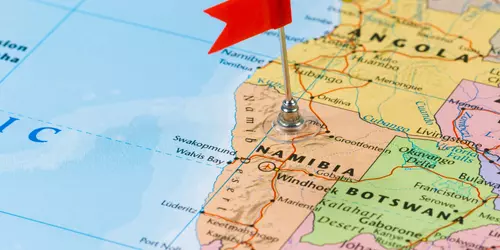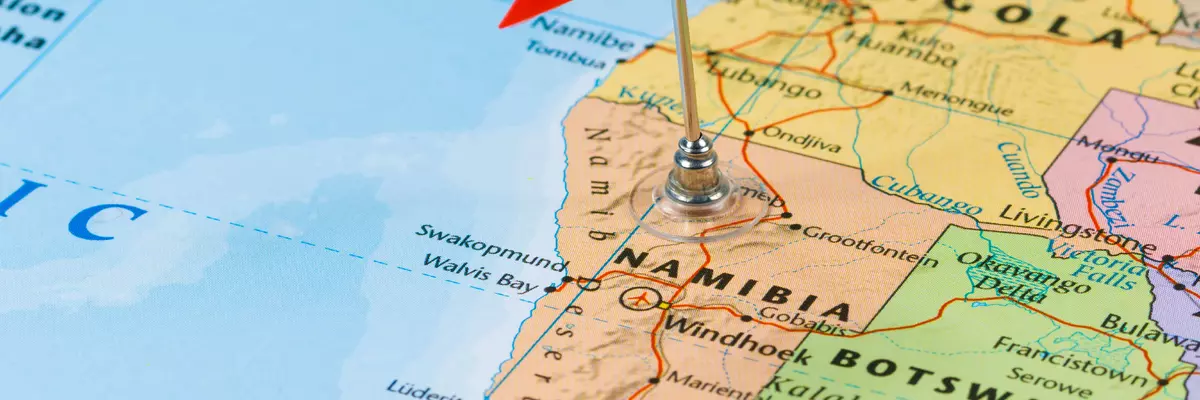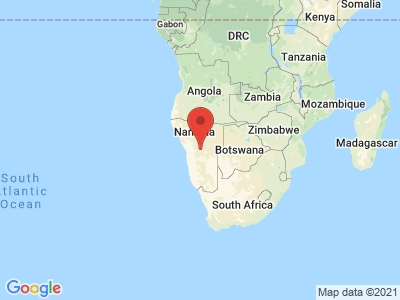Climate Table Namibia
Jan | Feb | Mar | Apr | May | Jun | Jul | Aug | Sep | Oct | Nov | Dec | |
|---|---|---|---|---|---|---|---|---|---|---|---|---|
| Max. Temperature | 21° | 21° | 21° | 20° | 19° | 19° | 18° | 17° | 17° | 18° | 19° | 21° |
| Min. Temperature | 14° | 14° | 14° | 13° | 12° | 11° | 10° | 10° | 11° | 11° | 12° | 14° |
| Sun Hours | 6 | 7 | 8 | 7 | 7 | 5 | 6 | 7 | 7 | 6 | 6 | 6 |
| Water Temperature | 14° | 14° | 15° | 15° | 15° | 14° | 13° | 12° | 11° | 11° | 12° | 13° |
| Rain Days | 1 | 1 | 1 | 1 | 1 | 1 | 0 | 0 | 0 | 0 | 0 | 0 |
The climate year of Namibia
Namibia is located directly on the Atlantic Ocean in Southwest Africa, bordering South Africa to the south. The 824,116 km² country has only been independent of South Africa since 1990, before that it was a de facto South African colony since the end of German colonial rule in 1920. The capital and largest city of the country is Windhoek. The city, which has about 330,000 inhabitants, is located approximately at the geographic center of Namibia. The country's name is derived from the vast Namib Desert, an arid desert that stretches along the Atlantic coast. Since 2013, large parts of the desert have been a UNESCO World Heritage Site. Another desert, the Kalahari, stretches to the east. Between these two deserts stretches the inland highlands, which reach the 2000-meter mark, especially around the capital Windhoek. The highest mountain is the 2600 meter high Königstein, which is located near the coast. The climate in Namibia is extremely hot throughout the year, and it also rains extremely little. However, it is usually very humid at the same time. The sun shines at least 300 days a year.
General information about Namibia
The colorful and contrasting landscapes of Namibia impress every visitor. An impression can be gained, for example, in the approximately 22,000 square kilometer Etosha National Park, which is also the largest game reserve in the country. Zebras, rhinos, elephants, giraffes, springboks, lions and numerous other representatives of African fauna live here. African wildlife can also be observed in the wild in the Waterberg Plateau Park. Impressive nature experiences can also be experienced at the Skeleton Coast. Here, for example, can be found tubing dunes, numerous shipwrecks and other phenomena. Today the Skeleton Coast belongs to the Namib Skeleton Coast National Park. Of course, the big cities of Windhoek and Swakopmund must not be missing in this list.
Tourism Namibia
Namibia's climate is subtropical-continental. This means it is very dry, but also very humid. The latter is a phenomenon of the arid zone, a climate zone in which it rains significantly less than ultimately evaporates moisture. On average, Namibia receives about 250 mm of precipitation, with rain falling almost exclusively in the summer months. Furthermore, the rule of thumb is that rainfall decreases the further southwest one travels. Over the Kalahari it rains comparatively much, while the Namib desert in the west is one of the driest zones in the world. The hottest months are December and January, when the thermometer reads as high as 40 °C. In the Namid Desert, temperatures of up to 48 °C are not uncommon. It is cooler with an average of 25 °C in July and August, although the temperature differences between day and night are extremely high.


